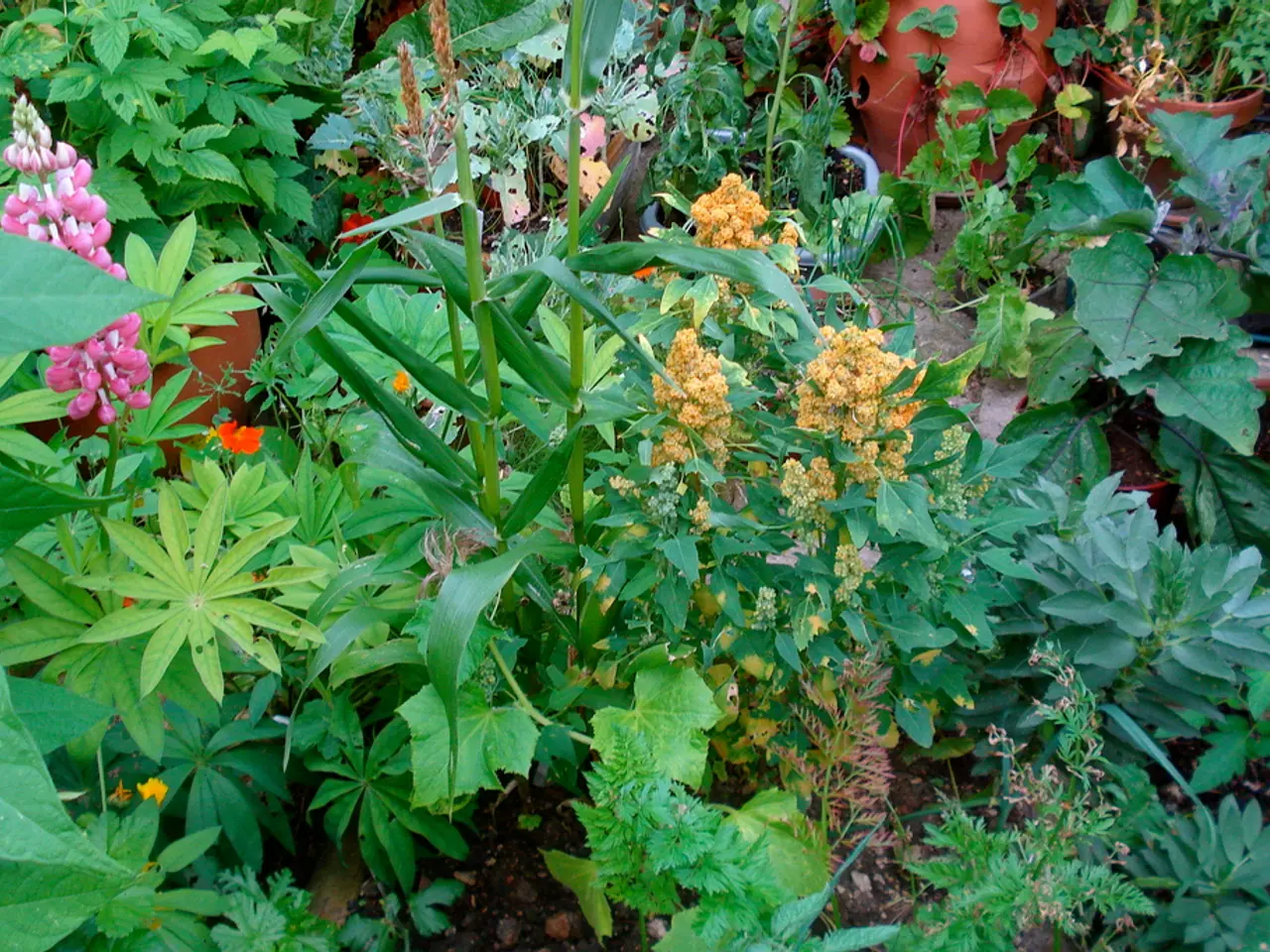Strategies to Ready Your Outdoor Haven for Warm Weather Season
Preparing Your Summer Garden: 7 Key Tips for a Thriving Oasis
Summer is just around the corner, and it's time to get your garden ready for the heat and potential drought. Here are seven key tips to help you prepare your garden for a thriving summer.
- Soil Health
A healthy garden starts with healthy soil. Enhance your soil by adding organic matter like compost to improve moisture retention, aeration, and nutrient availability. Incorporate compost and balanced fertilizer into the top 8 to 12 inches of soil before planting, which helps plants establish strong roots and withstand heat stress.
- Plant Health
Choose healthy, well-established plants and monitor for signs of stress, like drooping leaves, especially in heat-sensitive plants such as squash and melons. Regularly inspect and care for plants to maintain vigor throughout summer.
- Plant Choice and Location
Select plants suited for summer and heat-prone conditions. Position taller crops on the west side of the garden to provide natural afternoon shade for smaller plants. Use shade cloth or temporary covers, like sheets, to protect heat-sensitive vegetables like tomatoes, peppers, and cucumbers from intense sun during the hottest parts of the day.
- Watering and Irrigation
Water deeply and infrequently rather than lightly and frequently, aiming to saturate the soil to at least 6 inches deep to encourage deep root growth. Water early in the morning or late in the afternoon to reduce evaporation. Use drip irrigation or soaker hoses to deliver water efficiently to the root zone, minimizing runoff and water waste.
- Mulching
Apply mulch such as straw, grass clippings, dried leaves, wood chips, or compost around plants, keeping it a few inches away from stems to avoid rot. Mulch conserves moisture, regulates soil temperature, suppresses weeds, and slowly improves soil structure.
- Feeding the Garden
Feed plants with appropriate fertilizers or compost teas during the growing season to replenish nutrients lost to heat and watering. A balanced fertilizer with equal parts NPK (nitrogen, phosphorus, potassium) supports steady growth and fruit development.
- Additional Summer Garden Tips
- Use compost or moisture-absorbing materials like coconut coir or peat moss to help retain soil moisture during dry spells.
- Identify indicator plants with large, succulent leaves that show early signs of drought stress to monitor watering needs, e.g., wilted squash leaves signal time to water.
- Provide temporary shading solutions during heatwaves and move container plants to spots that receive morning sun but afternoon shade.
By integrating these strategies, your garden will be better prepared to endure summer heat and drought, leading to healthier and more productive plants. Happy gardening!
- Pruning fruit trees during late winter or early spring encourages fruit production and overall plant health by promoting new growth and improving air circulation.
- Maintaining a well-maintained lawn can contribute to a thriving garden by reducing runoff and erosion, which helps conserve water and preserve soil health.
- Outdoor-living and home-and-garden enthusiasts can further enhance their lifestyle by incorporating drought-tolerant plants like lavender, rosemary, or succulents into their gardens, creating a low-maintenance, beautiful environment.
- Regularly monitor your garden's mulch levels throughout the summer to ensure it consistently provides sufficient moisture conservation and weed suppression, especially during dry spells.
- In addition to vegetables, consider planting flowers like marigolds or zinnias to attract pollinators and add color to your summer garden, enhancing the overall aesthetic appeal.
- During periods of drought, use a rain gauge to track precipitation and manually water your garden when necessary to prevent stress on your plants and maintain healthy growth.
- Lastly, keep up with your regular gardening and watering routine to maximize plant health and ensure a bountiful harvest from your fruit trees and other vegetable plants.




